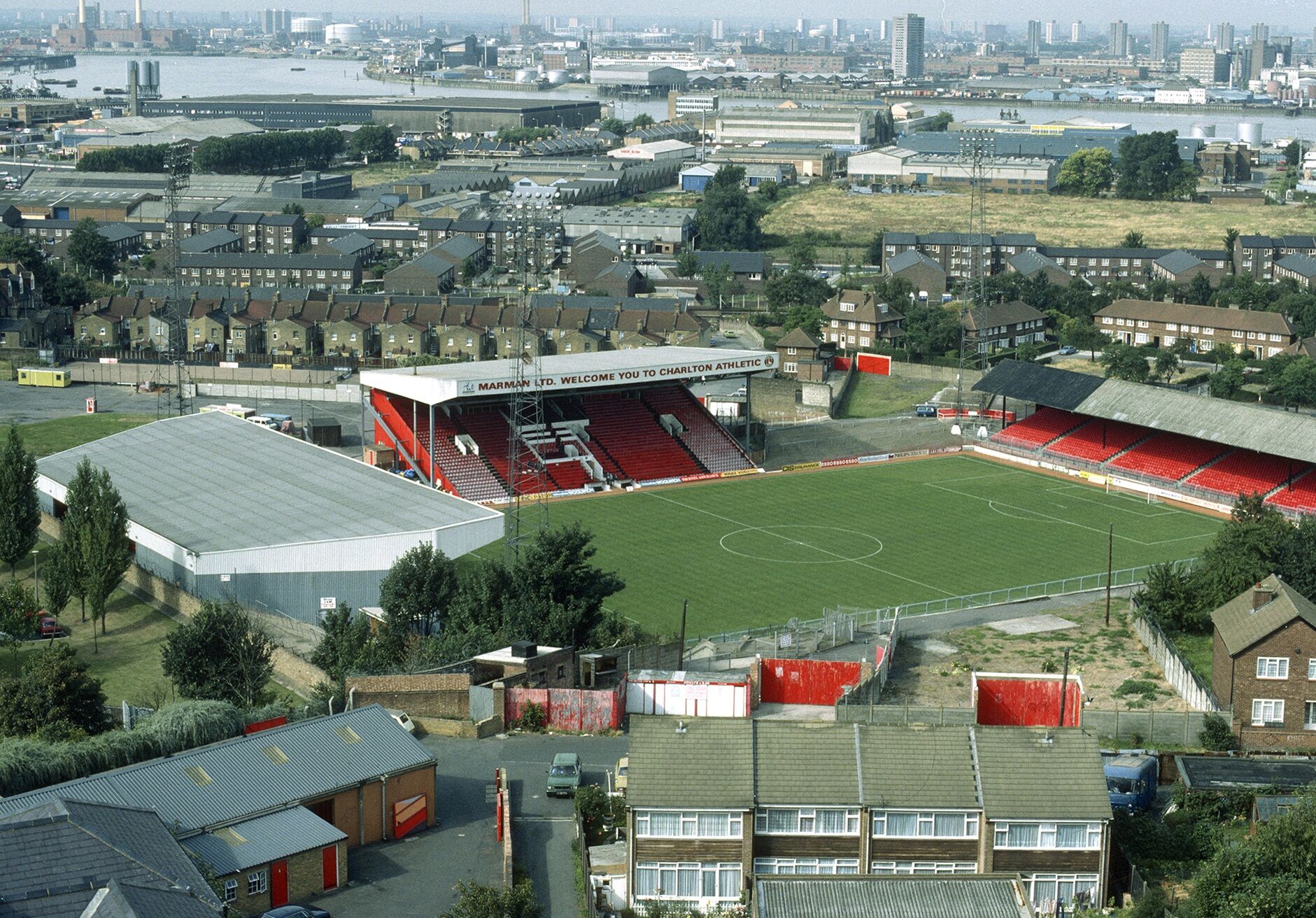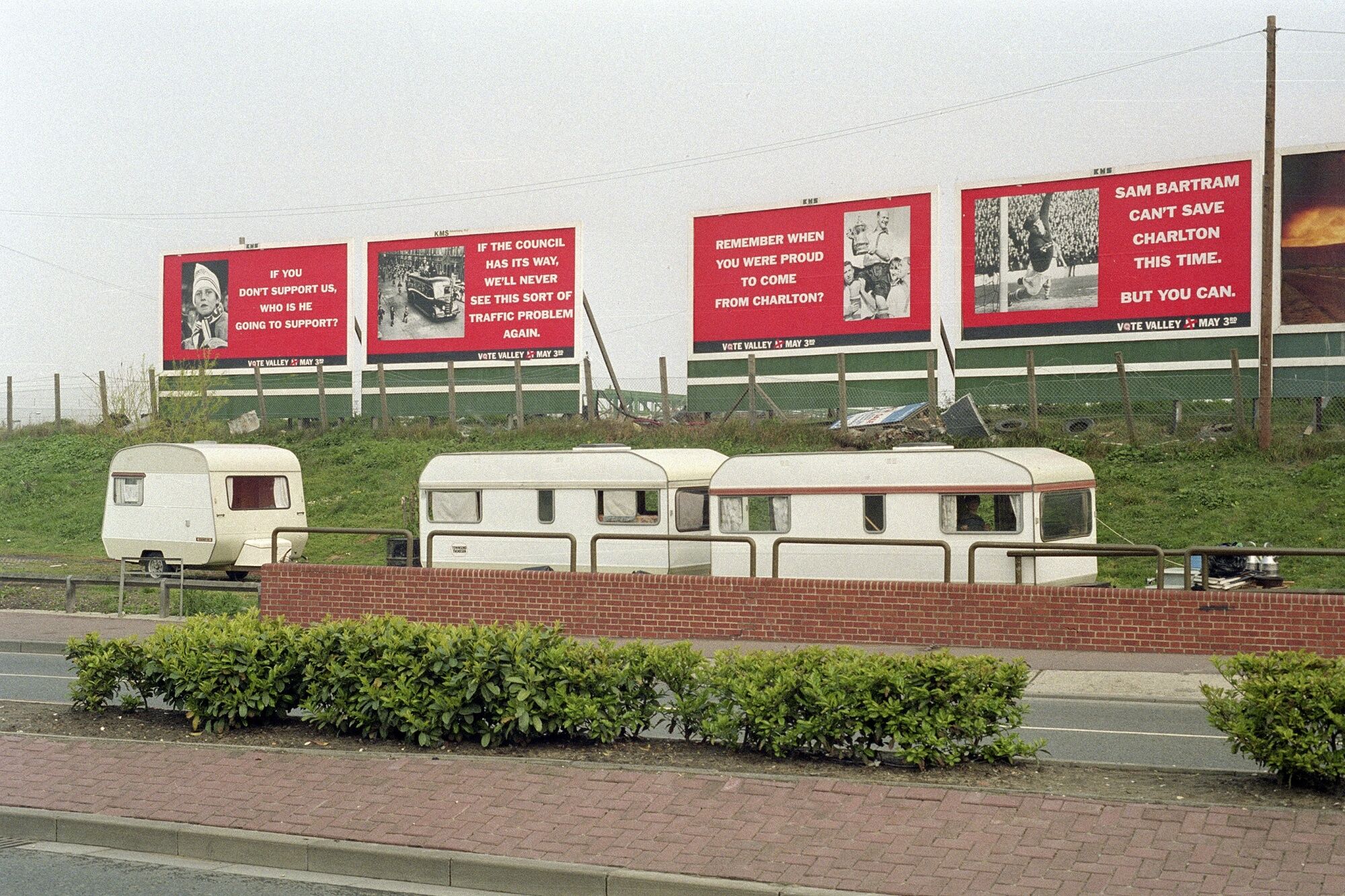Thirty years ago to the day, Charlton Athletic returned to their spiritual home of The Valley after seven years in exile, beating Portsmouth 1-0 in front of a crowd of 8,337.
Appropriately, the only goal of the game came in the seventh minute as Darren Pitcher laid the ball off for Colin Walsh to rifle home from the edge of the box – the strike signifying the final chapter of a turbulent spell in the club’s history.
For many years, The Valley was one of the largest Football League grounds in Britain but since Charlton’s 1947 FA Cup win the ground had slowly fallen into disrepair due to a series of mis-management and negligence by the Glikstein family over the following decades.
Things eventually came to a head during the economically fraught 1980s when then-Chairman Michael Glikstein refused to make the necessary investment to bring the stadium up to the required standard.
“The big East Terrace had been condemned by the Greater London Council because Charlton had not done the work on it that they’d promised to do five years earlier,” explained Rick Everitt, former editor of iconic Charlton fanzine ‘The Voice of the Valley’.
“But instead of spending money on it, Glikstein sold the club for a minimal fee in 1982 to Mark Hulyer while keeping the ownership of the ground and renting it back to the new owner.”

While initially Hulyer enjoyed success, investing heavily on the pitch to bring the likes of European Footballer of the Year Allan Simonsen to the club, the businessman quickly fell into financial trouble.
Just two years later, with gate receipts dwindling and winding-up petitions mounting, Hulyer eventually went bust with the club only rescued on the eleventh hour of March 1984 by a consortium of members from the Sunley Property Group, led by chairman John Fryer.
However, while the club may have been saved, the long-term future of The Valley remained bleak.
“Although they retrieved the club from bankruptcy and still leased the ground on quite favourable terms, the new owners weren’t prepared to spend the money required to keep the ground open,” Everitt added.
“Granted, they invested a lot into the squad but essentially they wanted a ready-made stadium for First Division football.
“What they failed to understand though was that Charlton’s attendances would be drastically lower if they played away from The Valley.”
Nevertheless, shortly after the start of the 1985–86 season, Charlton left The Valley – entering into a long-term agreement with Crystal Palace to ground-share Selhurst Park.
It was a particularly hard decision to take as the club would subsequently go on to gain Division One promotion and spend the following four seasons in the top-flight under manager Lennie Lawrence.

“It was enormously frustrating, not just having to go to Selhurst Park, but because the opportunity to watch First Division football at The Valley had been lost,” Everitt said.
“Generations of supporters had waited for that opportunity as it had been 29 years since Charlton had last been in the top-flight.
“It was astonishing they got promoted given the circumstances around the club, and although the finances weren’t as stark in the 1980s as they are now, it was still a huge achievement by Lennie Lawrence to keep the club in the First Division for as long as he did.”
A fan movement to return to The Valley began not long after the club’s departure with a petition accruing 15,000 signatures and leading to Everitt setting-up ‘The Voice of the Valley’ as a platform for the initiative.
Remarkably, a political party called ‘The Valley Party’ which consisted of Charlton fans was even established to contest the 1990 Greenwich local elections after the Labour-run council had rejected planning permission for The Valley to be rebuilt.
While the party may not have won any seats, it gained an impressive 10.9% of the total vote share (14,838 votes), sending a clear message to the local authorities that the issue had to be put on the agenda.

“I think that was the single most extraordinary thing I’ve been involved in as a football fan,” Everitt said.
“It changed the narrative as well as Charlton completely, bringing on board a whole cohort of people who became Valley Party candidates.
“Over the following 10 years quite a lot of them ended up in positions of responsibility at the club, changing the whole culture of it.
“It showed that however much expertise you had inside the club, there were a whole number of people outside who wanted to give their time, experience and expertise to also help it.
“The administration of the club was soon taken over by supporters and that energised the club, giving it the momentum which would eventually take Charlton to the Premier League in 1998.
“In the end, leaving The Valley was probably the best thing that happened as it changed the club completely.”
Within a year of local elections a revised planning application for the stadium was accepted by the council, helping to clear the way for the club to return home in 1992.
On the December 5th homecoming, Everitt recalls an occasion of jubilation at the culmination of a monumental struggle.
“There was bright sunshine, and there was quite a surreal atmosphere that after all this time and all those battles we were finally playing a match at The Valley.
“The match itself unfolded in exactly the way people wanted it to – Charlton won and we scored the only goal early on. The ground was full of very emotional people, myself included.
“I don’t think there’s been a resurrection of a football ground quite like Charlton going back to The Valley after seven years of exile.”
READ MORE: Theo Foley – the Irishman who deserves more than a footnote in footballing history
While those who participated in Charlton’s battle to return to The Valley will always remember their struggle, Everitt believes future generations of Charlton fans must not forget the significance of events and their impact on the club.
“The Valley is a statement about the club’s future as well as its past, it’s a Premier League stadium, and it gives fans the belief that we belong at that level and can get back there.”
In an era where football commercialisation is reaching unseen heights, the anniversary of Charlton Athletic fans’ fight to bring their club home is a reminder of the difference fan activism can make to a game that is still inescapable owned by the supporters.
Photos provided with thanks to Tom Morris/Charlton Athletic Museum.